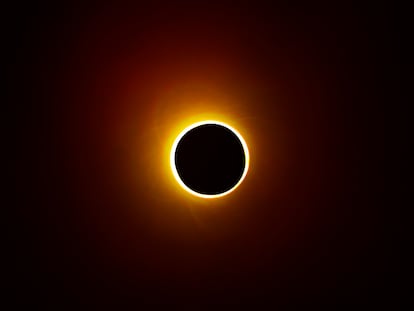Moon Calendar 2023: When is the next supermoon?
There are still some important astronomical events involving the Moon, including another Supermoon and two eclipses
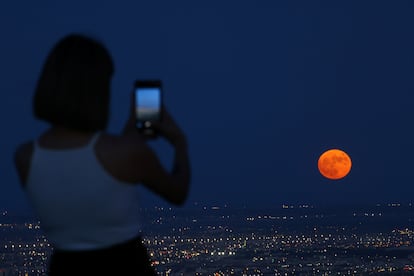
From the dance of the Moon through its phases to the spectacle of solar and lunar eclipses, these celestial occurrences have long held fascination for people across cultures and generations.
In this calendar, we’ll guide you through the key dates when the Moon take scenter stage, providing a chance to witness interesting phenomenons. So, mark your calendars and prepare to be awed by the cosmic events that will unfold throughout what is left of the year.
September 15 - New Moon
The Moon enters this phase on September 15 at 01:41 UTC. It will not be visible in the night sky because the Moon will be located on the same side of the Earth as the Sun. However, this will be the best time of the month to observe galaxies and star clusters in the sky because there is no moonlight.
Viewers can observe deep space objects and constellations like Orion with its nebulae and the Pleiades, a star cluster that has been known for centuries, inspiring legends between certain Native American people, like the Cherokees and the Iroquois.
September 29 - Full Moon and Supermoon
The Full Moon phase will occur at 09:59 UTC and it will be visible, fully illuminated, as the Moon will be located on the opposite side of Earth as the Sun. In American folklore, the full moon nearest to the autumnal equinox (22 or 23 September) is traditionally called “harvest moon” or “full corn moon”. The names are attributed to Native Americans. The following moon is called “the hunter’s moon”.
This Full Moon will also be the last of four supermoons for 2023. As it it will be closer to Earth it may look larger and brighter.
This is a supermoon, which is a full moon or new moon that nearly coincides with the closest distance the Moon comes to the earth in its orbit. Because of the distance, the Moon looks larger-than-usual.
October 14 - New Moon
The Moon enters this phase on October 14 at 17:56 UTC. It will not be visible in the night sky because the moon will be located on the same side of the Earth as the Sun. Galaxies and star clusters will be more visible because of the lack of moonlight.
This is a great chance to see the Orionids, a meteor shower caused by Comet Halley’s debris, reaching its peak on October 21 and 22.
October 14 - Annular solar eclipse
On Saturday, October 14, 2023 a solar eclipse will be visible throughout much of North and South America. A solar eclipse occurs when the Moon passes between the Earth and the Sun, and it’s too far away from the Earth to completely cover the Sun, thereby totally or partly obscuring the image of the Sun for viewers on Earth.
The Moon’s apparent diameter is smaller than the Sun’s, blocking most of the Sun’s light. This results in a ring of light around the darkened moon. The eclipse path will begin in the Pacific Ocean off the coast of southern Canada and then move across the southwestern U.S. and Central America, Colombia and Brazil.
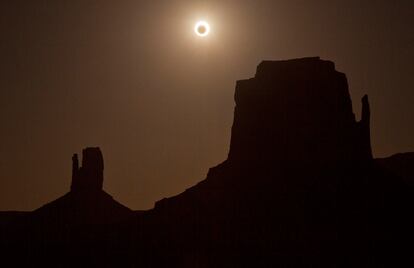
The eclipse’s path will begin in Oregon at Dunes City and cross the United States, passing through several notable locations including Crater Lake National Park, Eugene, and Medford in Oregon, then traveling through California, Nevada, Utah, Arizona, Colorado, New Mexico, and finally Texas before reaching the Gulf of Mexico. This eclipse will be the second annular eclipse visible from Albuquerque in 11 years and coincides with the last day of the Albuquerque International Balloon Fiesta.
Looking directly at the photosphere of the light can cause permanent eye retina damage. This is because of the intense radiation that the photosphere emits. Viewing the Sun disk through any kind of optical aid like binoculars or a telescope is extremely hazardous.
For viewing this kind of eclipse, observers need to use eclipse glasses which filter out eye damaging radiation. However, the safest way to view the Sun’s disk is by indirect projection, which can be done by projecting an image of the disk onto a white piece of paper or card using a pair of binoculars, a telescope or a piece of cardboard with a small hole in it (as a pinhole camera).
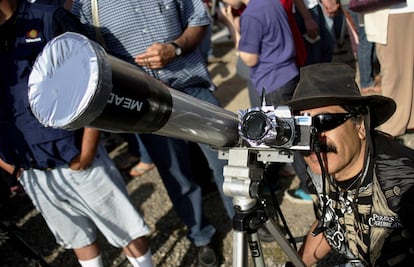
Although viewing the eclipse through a phone camera is safe, the camera might be damaged by direct exposure to the sun.
The solar eclipse of October 14, 2023 will start around 14:45 UTC ending at 20:55 UTC. The greatest eclipse time will be at 18:00:41.
The following eclipse will be a partial lunar eclipse on October 28.
October 28 - Full Moon
The Moon will start this phase at 20:25 UTC on October 28. Its face will be fully illuminated. This Full Moon is traditionally called the Hunters Moon and has also been known as the Travel Moon and the Blood Moon.
October 28 - Partial Lunar Eclipse
A partial lunar eclipse will take place on Saturday, 28 October 2023. This eclipse will only be completely visible over Europe and most of Asia and Africa, and will be seen rising over the eastern Americas, setting over Australia. It will begin at 18:01:47 UTC and finish at 22:26:20 UTC. The greatest eclipse will be seen at 20:14:03 UTC.
A lunar eclipse occurs when the Moon moves into the Earth’s shadow, causing the Moon to be darkened. When it is totally eclipsed, the Moon takes on a reddish color that is caused when Earth completely blocks direct sunlight. The light appears red due to the Rayleigh scattering of blue light. Something similar happens at sunrises and sunsets.
Lunar eclipses are safe to view without any eye protection or other precautions.
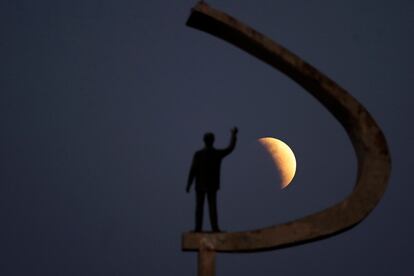
November 13 - New Moon
The Moon enters this phase on November 13 at 09:28 UTC. It will not be visible in the night sky because the Moon will be located on the same side of the Earth as the Sun. Galaxies and star clusters will be more visible because of the lack of moonlight.
November 27 - Full Moon
The Full Moon phase will occur at 09:17 UTC and it will be visible, fully illuminated, as the Moon will be located on the opposite side of Earth as the Sun. This Full Moon is traditionally known as the Beaver Moon.
December 12 - New Moon
The Moon will begin this phase at 23:33 UTC. It will not be visible in the night sky because the Moon will be located on the same side of the Earth as the Sun. Galaxies and star clusters will be more visible because of the lack of moonlight. Geminids will reach their peak on December 14.
December 27 - Full Moon
The Full Moon phase will occur at 00:34 UTC and it will be visible, fully illuminated, as the Moon will be located on the opposite side of Earth as the Sun. This Full Moon is traditionally known as the Beaver Moon.
Sign up for our weekly newsletter to get more English-language news coverage from EL PAÍS USA Edition
Tu suscripción se está usando en otro dispositivo
¿Quieres añadir otro usuario a tu suscripción?
Si continúas leyendo en este dispositivo, no se podrá leer en el otro.
FlechaTu suscripción se está usando en otro dispositivo y solo puedes acceder a EL PAÍS desde un dispositivo a la vez.
Si quieres compartir tu cuenta, cambia tu suscripción a la modalidad Premium, así podrás añadir otro usuario. Cada uno accederá con su propia cuenta de email, lo que os permitirá personalizar vuestra experiencia en EL PAÍS.
¿Tienes una suscripción de empresa? Accede aquí para contratar más cuentas.
En el caso de no saber quién está usando tu cuenta, te recomendamos cambiar tu contraseña aquí.
Si decides continuar compartiendo tu cuenta, este mensaje se mostrará en tu dispositivo y en el de la otra persona que está usando tu cuenta de forma indefinida, afectando a tu experiencia de lectura. Puedes consultar aquí los términos y condiciones de la suscripción digital.

